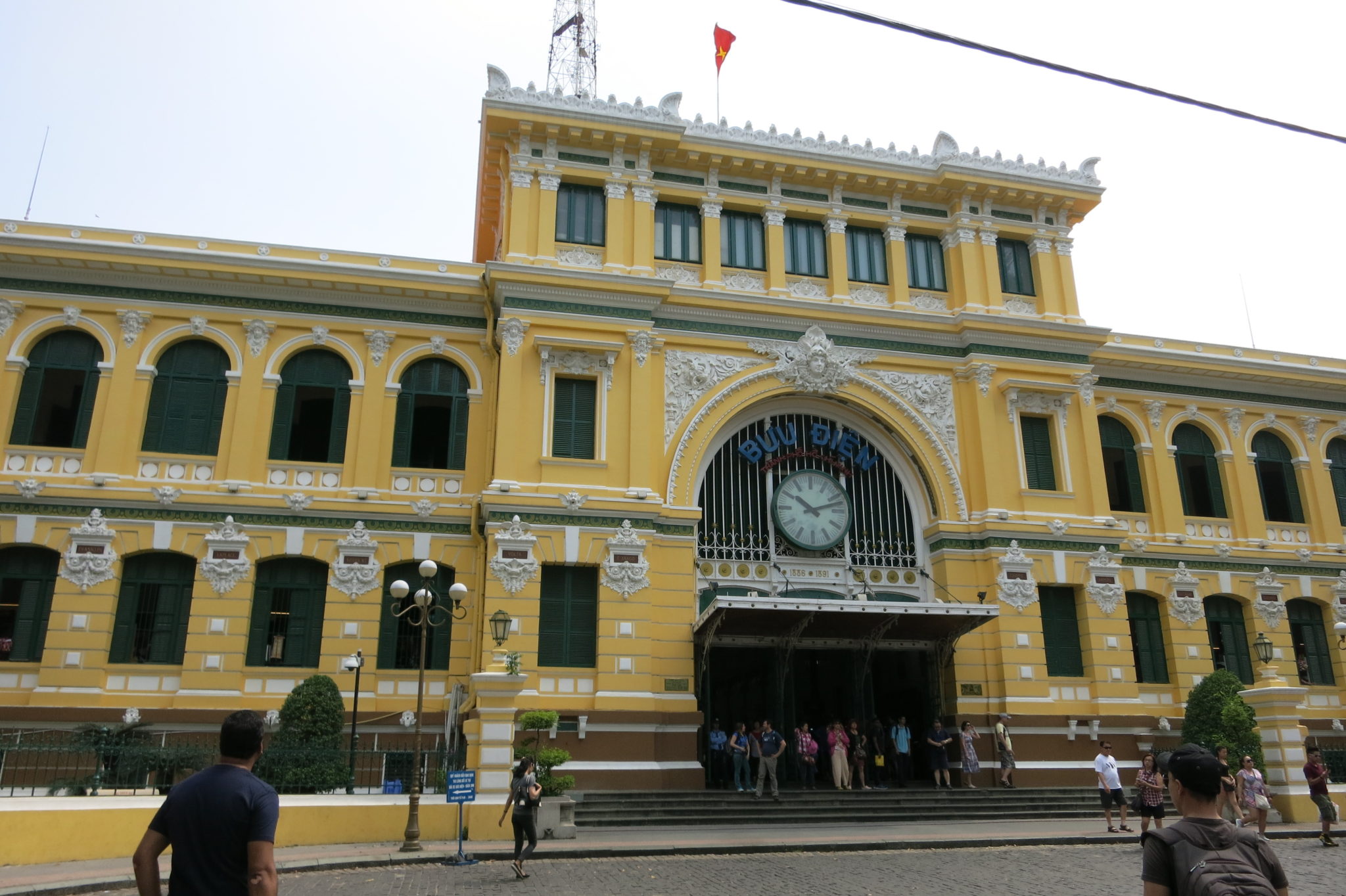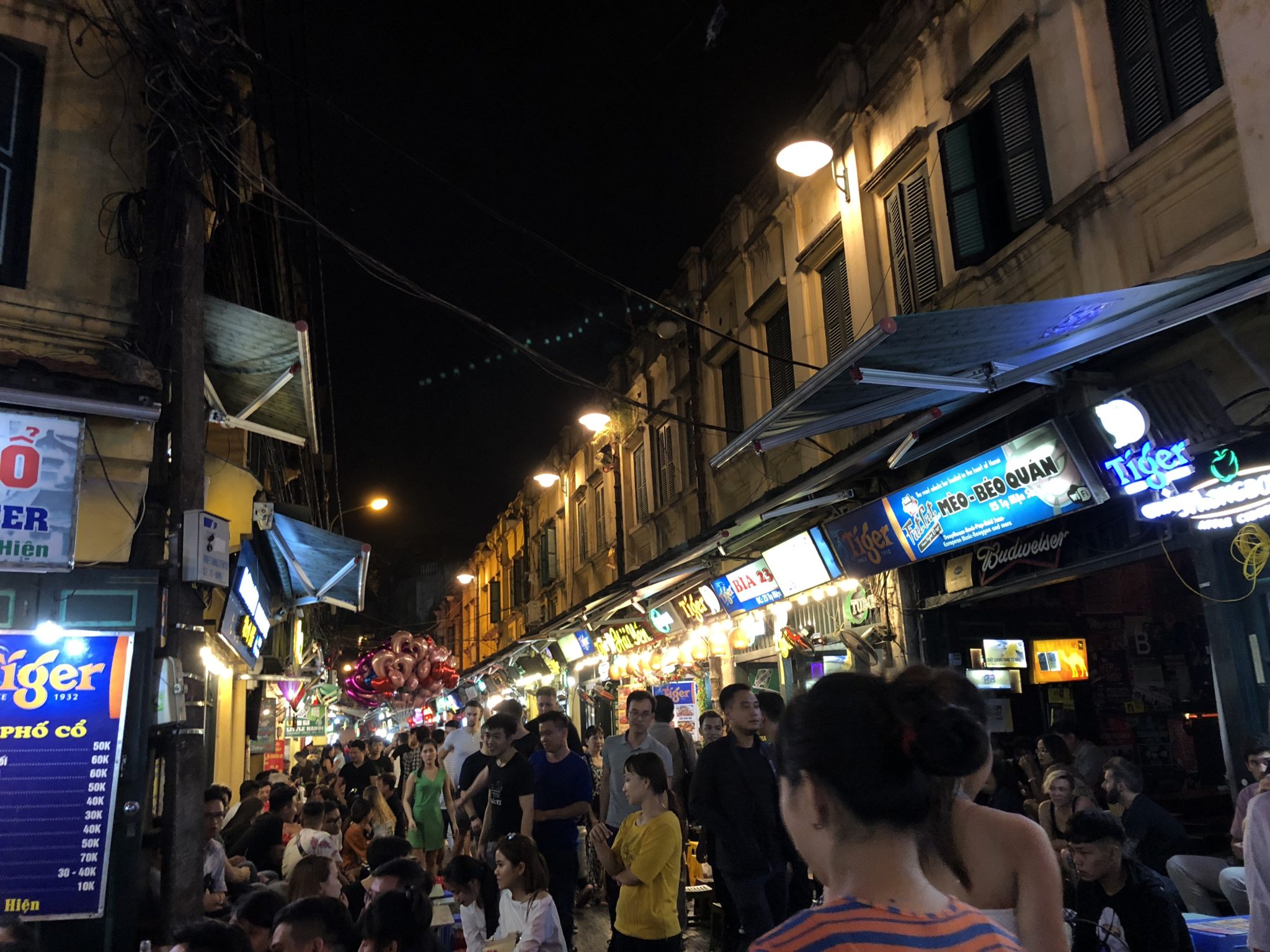
Saigon (also officially known as Ho Chi Minh City or locally in Vietnamese as Sài Gòn) is Vietnam’s most booming up and coming city, a places where the action never stops. Saigon was merged with the surrounding province in 1976 and renamed Ho Chi Minh City to celebrate the reunification of north and south at the end of the Vietnam War. The name comes from the communist revolutionary leader credited with uniting the country.
From the buzzing motorbikes to street hawkers, the city is very happening. It has developed quite a bit since my visit to the city two years ago. There is currently construction going on for the city metro line, a partnership between Japan and Vietnam. More luxury brand stores have sprung up in the city and there is a second sky bar which overlooks the city. I personally prefer Saigon to Hanoi because I had fewer chances of being cheated in Saigon and people seemed to be more approachable.
When in Ho Chi Minh City, do not forget to check out these landmarks – the Reunification Palace, the War Remnants museum, the Notre Dame Cathedral, the General Post Office and Ben Thanh market.

The Reunification Palace, also known as the Independence Palace, is a major landmark in Ho Chi Minh City. Surrounded by royal palm trees, the dissonant 1960s architecture of this government building and the eerie mood that accompanies a walk through its deserted halls make it an intriguing spectacle. The first Communist tanks to arrive in Saigon rumbled here on 30 April 1975 and it’s as if time has stood still since then. The building is deeply associated with the fall of the city in 1975.

See Saigon’s impressive Notre Dame Cathedral (currently closed for refurbishment). Built between 1877 and 1883, Notre Dame Cathedral enlivens the heart of Ho Chi Minh City’s government quarter, a remnant of the French. A brick, neo-Romanesque church with 40m-high square towers tipped with iron spires, the Catholic cathedral is named after the Virgin Mary. Interior walls are inlaid with devotional tablets and some stained glass survives.

Right across the road from Notre Dame Cathedral is another French remnant that is beautifully preserved is perhaps the grandest post office in all of Southeast Asia, the Central Post Office in Ho Chi Minh city. Painted on the walls of its grand concourse are fascinating historic maps of South Vietnam, Saigon and Cholon, while a mosaic of Ho Chi Minh takes pride of place at the end of its barrel-vaulted hall.

Just beside the post office is a lovely book street. It is home to over 20 small shops run by Vietnamese publishing companies, as well as a number of smaller stalls and cafes. Reading hardcopy books is a dying hobby with the advent of technological devices, so the idea of having a book street is novel and encourages young people to purchase books too. For those who prefer to have a relaxing read, they can do so in one of the cafes lined along the street. Just buy a cup of coffee and spend the whole day there browsing through the collection of books.


For the history buff, do head over to the War Remnants museum. It is consistently popular with Western tourists. Few museums anywhere convey the brutal effects of war on its civilian victims so powerfully. Many of the atrocities documented here were well publicised, but rarely do Westerners hear the victims of US military action tell their own stories. While some displays are one-sided, many of the most disturbing photographs illustrating US atrocities are from US sources. I was especially shocked by the use of Agent Orange and some of the third or fourth generation children born after the Vietnam-American war are still suffering the side-effects from the use of this chemical. On the outside, there are some American military planes and helicopter on display.

Last but not least, do allocate some time to do shopping for clothes or souvenirs on your last day in Ho Chi Minh city. Centrally located, Ben Thanh and its surrounding streets comprise one of HCMC’s liveliest areas. From coffee to dried goods, clothes, souvenirs and fabric, everything can be found in abundance in this gargantuan market. When the market closes around 7pm in the evening, a makeshift night market miraculously sprouts up on the street beside Ben Thanh market, selling similar stuff but on a smaller scale.
After you have finished exploring the landmarks in the city, it is time to check out the food scene! If not, book a local tour and head over to the Mekong delta, Cu Chi tunnels or travel slightly further up north to experience desert landscapes in Mui Ne.


